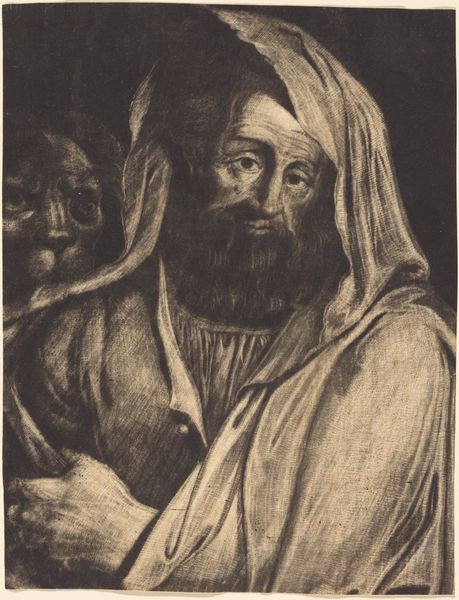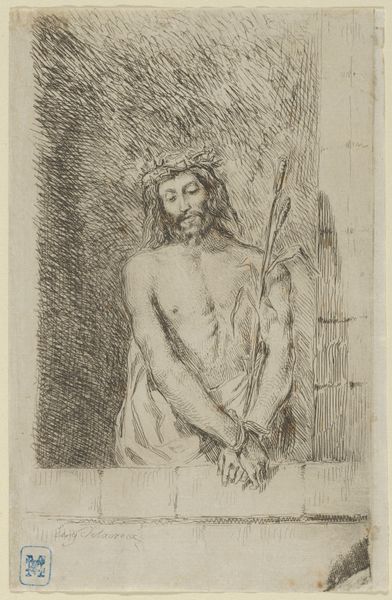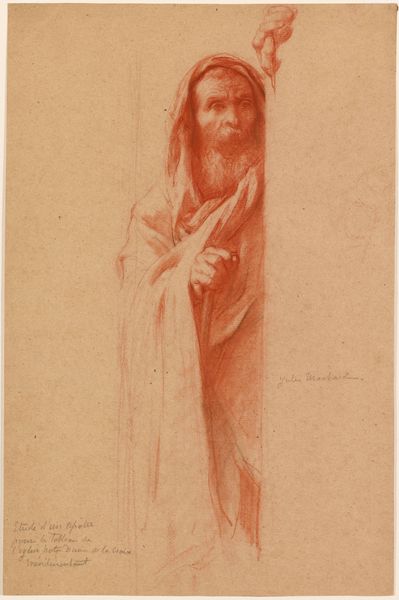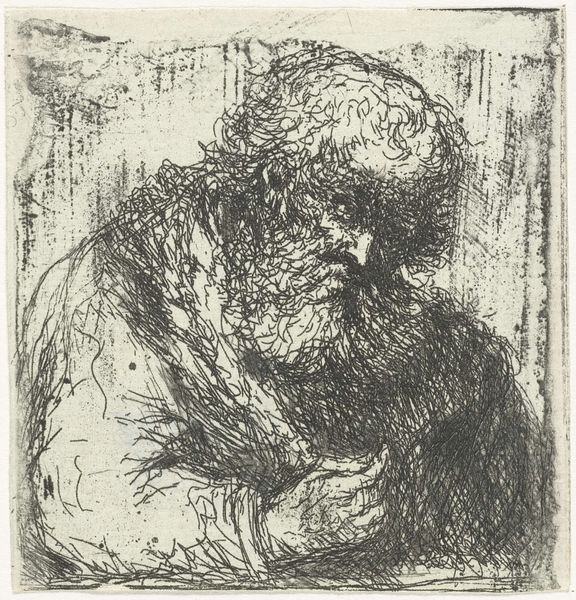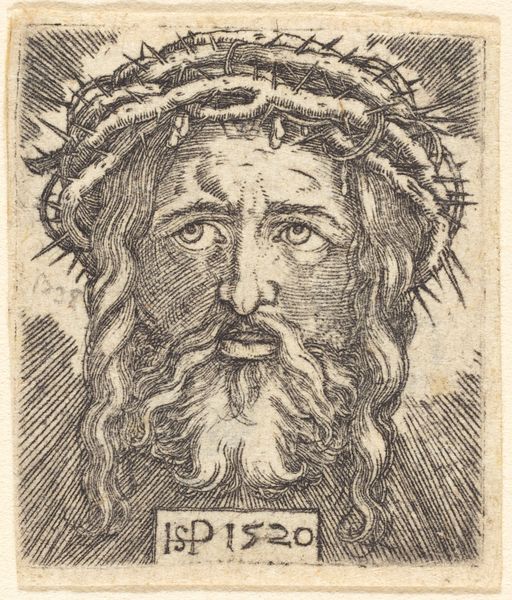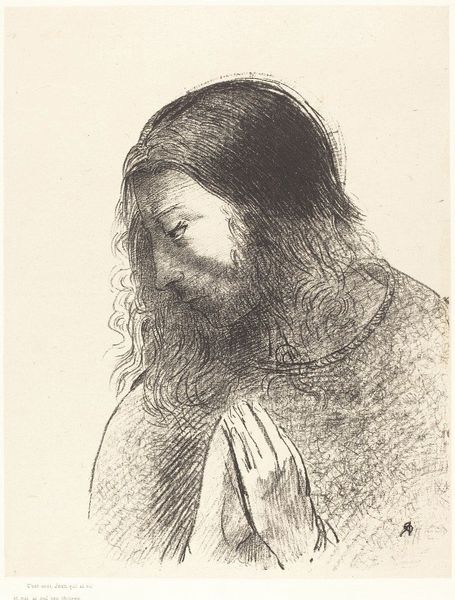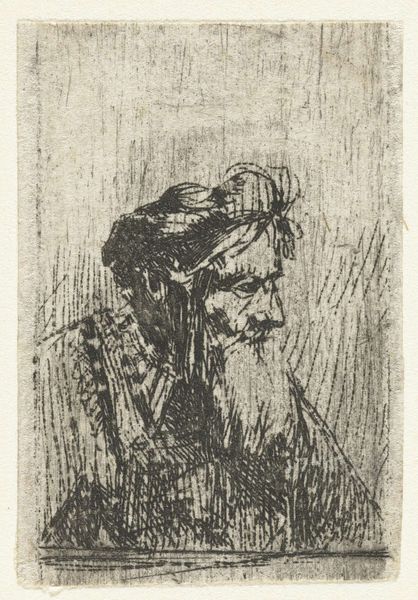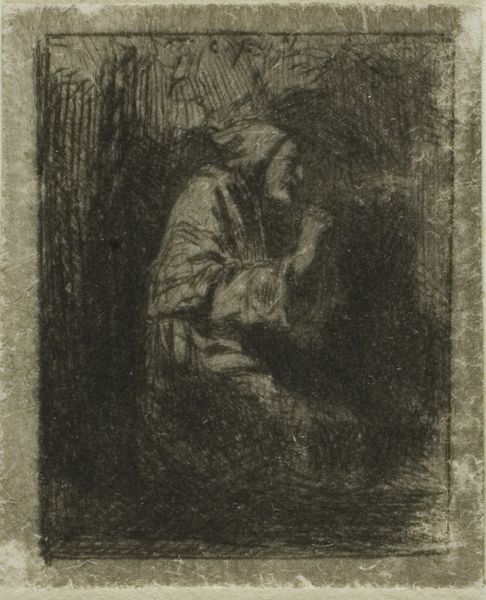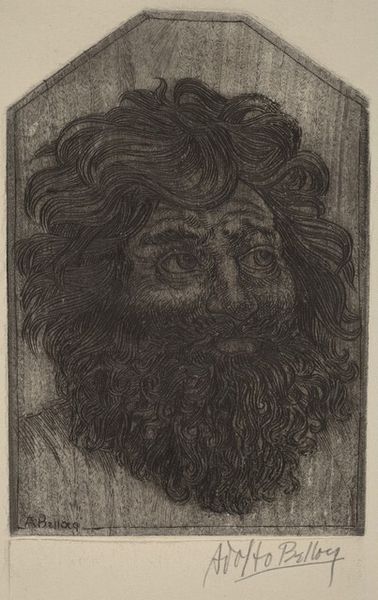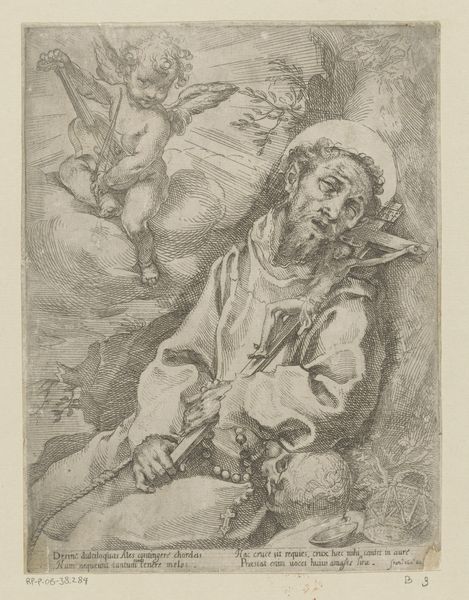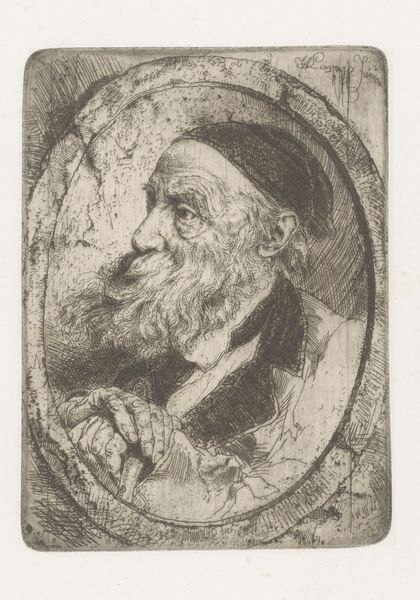
drawing, etching, graphite
#
portrait
#
pencil drawn
#
drawing
#
pen sketch
#
etching
#
pencil sketch
#
hand drawn
#
pen-ink sketch
#
pen work
#
graphite
#
academic-art
Copyright: Public domain
Jean-Baptiste Carpeaux made this etching, entitled "Portrait D'homme," in 1867. Carpeaux was a French sculptor and painter during the Second Empire, a period of rapid modernization and social change. The image presents a bearded man, perhaps an artist or intellectual, rendered with loose, energetic lines that capture a sense of immediacy and character. We can think about this image in the context of the rise of printmaking as a popular and democratic art form in 19th-century France. Prints allowed artists to reach a wider audience beyond the traditional Salon system. This was an important challenge to the art establishment, where the Académie des Beaux-Arts held considerable sway over artistic taste and careers. Carpeaux's etching embodies a spirit of artistic experimentation and independence. To understand it fully, art historians consult a wide range of sources, from exhibition reviews to artists' letters, to reconstruct the cultural and institutional context in which the work was made.
Comments
No comments
Be the first to comment and join the conversation on the ultimate creative platform.
